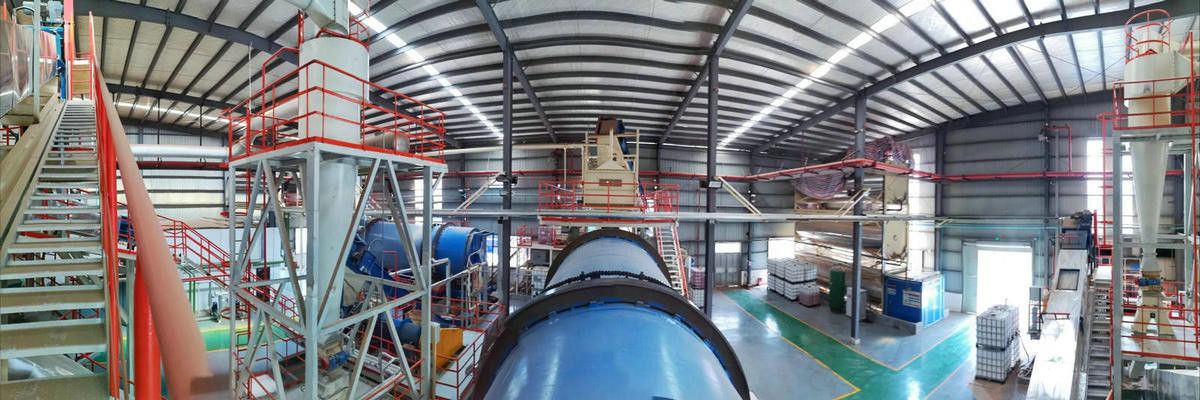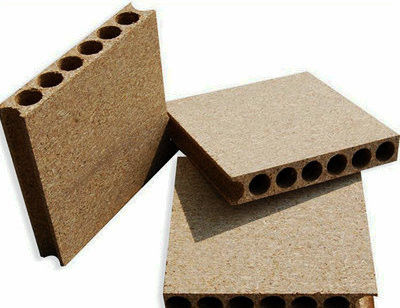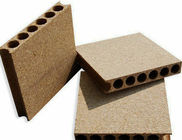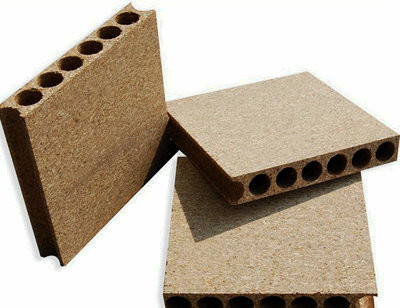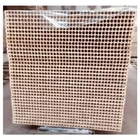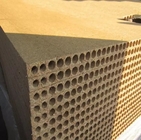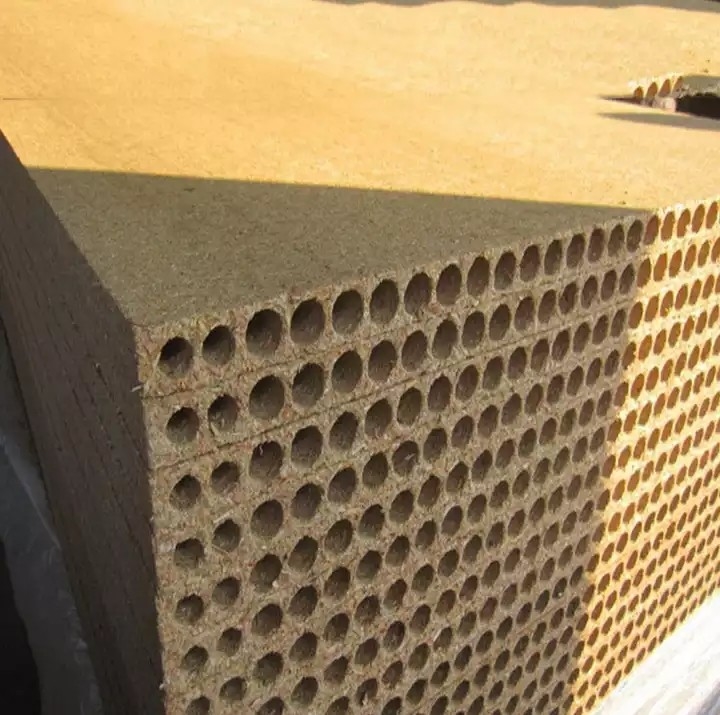E1 Hollow Core Bridge Tubular Particle Board Chipboard Door Core
Hollow particle board, also known as bridge mechanical board, is an innovative door core board manufacturing technology.
Hollow particle board as a door core board manufacturing process innovation, has become the strength of the inner door manufacturer's products a highlight. Bridge mechanics plate using the principle of arch bridge, through high-tech processing, the solid wood sawdust into a unique tubular structure, it can be distributed evenly and ensure no deformation, because the weight is less than the same size of the solid board half, light texture can also avoid hinge and door cover is too heavy and caused by deformation, prolong the service life. At the same time, the mechanical plate also acts like a thermos to effectively prevent the diffusion of temperature and keep a pleasant temperature in both winter and summer.
1. Excellent physical performance
The density of bridge mechanical board is 0.35-0.55g/cm3, while that of flat pressed door board is about 0.75g/cm3. It can be seen that the density of bridge mechanical board is lower than that of flat pressed particleboard. Therefore, the mass of door core plate can be greatly reduced by up to 60 % by using bridge mechanical plate. The mechanical board of bridge tunnel has good thermal insulation and sound insulation performance. The hollow board of 40 mm thick is equivalent to the thermal insulation effect of 300 mm thick brick wall, and the sound insulation is as high as 28 decibels. Its compression performance is good, under 2MPa pressure, will not produce deformation; Due to the particularity of the manufacturing process of the bridge mechanical plate, the water absorption expansion rate (TS) of the product in the thickness direction is very small, almost comparable to the radial deformation of wood.
Although the longitudinal static bending strength of the bridge mechanical plate produced by extrusion method is very low and the water absorption expansion rate in the length direction is high, the longitudinal static bending strength can fully meet the national standard requirements of ordinary particle board after using 3mm veneer. At the same time, the bridge mechanical plate is only used as the core plate, which has certain requirements on its thickness. It will be veneered when used, and it is only used in a dry environment. The water absorption expansion rate in the direction of the length will not affect its use.
2. Low manufacturing cost
In terms of raw materials: the density of bridge-hole mechanical board is far lower than that of flat-pressed particleboard, and the raw materials used for making the same volume of board are far less than that of ordinary particleboard. If urea-formaldehyde resin is used as the adhesive to manufacture particleboard, the sizing amount of qualified flat-pressed particleboard is 10%-12%, while the sizing amount of bridge mechanical board is only 4%-8%. Visible, in terms of raw materials, bridge mechanical plate can also greatly reduce the manufacturing cost of plate.
Equipment: Because the extrusion method is produced by the extrusion head of the extruder to control the feeding amount of the extruder, and the plate thickness is controlled by the hot pressing plate, although the single production efficiency of the extruder is relatively low, but compared with flat pressing particleboard, the extrusion method does not need special laying machine, prepressing machine, slab transport machine, slab acceleration transport machine. The shavings mixed with glue can be directly sent to the extruder by the silo. Less equipment is required for the production of bridge mechanical plate, and its operation cost and equipment maintenance cost will be reduced.
3. Simplify the technological process
The bridge mechanical plate produced by extrusion method can be directly sent to the extruder for extrusion molding without paving and prepressing after the sizing of raw materials. It can be seen that compared with the flat pressing method for the production of particleboard, the extrusion method for the production of bridge mechanical board can avoid the two processes of slab paving and prepressing, thus simplifying the process flow.
4. Reduce the free formaldehyde release of the plate
The most troubling problem with wood-based panels is the release of free formaldehyde. Free formaldehyde comes from two parts: 1) the formaldehyde release of wood itself. 2) Formaldehyde not involved in the reaction in urea-formaldehyde resin adhesive, formaldehyde released in the process of hot pressing and in use. And its fundamental, the main reason is the use of urea-formaldehyde resin adhesive. Although the free formaldehyde can be reduced by formaldehyde trapping agent, lengthening hot pressing time, plate post-treatment and other measures, it will increase the manufacturing cost of the plate. The door panels produced by extrusion method can be produced with the urea-formaldehyde resin adhesive which is lower than that of ordinary particleboard, so as to reduce the free formaldehyde release amount of the panels. For example, with straw and wood mixture as raw materials and urea-formaldehyde resin as adhesive, the door panel with free formaldehyde of 3mg/100g can be produced.

Good quality hollow core particle board / tubular chipboard door core
(1) Product name: hollow particle board ,tubular particle board,chipboard
(2) Advantage: Environmental protection,Heat preservation,sound insulation,light in weight, anti-impact,stable in dimensions and easy to processing.
(3) Materials:poplar or hardwood mixture
(4) Specifications:
Length: 2000mm or as requested
Width: 900mm,1250mm
Thickness: 28mm,30mm,33mm,34mm,38mm
Hole diameter: 21~28mm
Features Of Hollow Core Particle Board:
Its lightness, easy portability and different models, the flats that are being used as an alternative, come to the forefront in home and business garden decorations.
Applications Of Hollow Chipboard:
Environmental protection Hollow particle board adopted high-quality imported logs as raw materials. It can be used for door cores, furniture, decorative, partition wall stuffing, etc.

What is PB ?
Particle board – also known as particleboard, low-density fibreboard (LDF), and chipboard – is an engineered wood product manufactured from wood chips, sawmill shavings, or even sawdust, and a synthetic resin or other suitable binder, which is pressed and extruded. Oriented strand board, also known as flakeboard, waferboard, or chipboard, is similar but uses machined wood flakes offering more strength. All of these are composite materials that belong to the spectrum of fiberboard products.
Characteristics
Particle board is cheaper, denser and more uniform than conventional wood and plywood and is substituted for them when cost is more important than strength and appearance. Particleboard can be made more appealing by painting or the use of wood veneers on visible surfaces. Though it is more dense than conventional wood, it is the lightest and weakest type of fiberboard, except for insulation board. Medium-density fibreboard and hardboard, also called high-density fiberboard, are stronger and denser than particleboard. Different grades of particleboard have different densities, with higher density connoting greater strength and greater resistance to failure of screw fasteners.
A significant disadvantage of particleboard is its susceptibility to expansion and discoloration from moisture absorption, particularly when it is not covered with paint or another sealer. Therefore, it is rarely used outdoors or in places where there are high levels of moisture, except in bathrooms, kitchens and laundries, where it is commonly used as an underlayment shielded beneath a moisture resistant continuous sheet of vinyl flooring.
In dry environments, veneered particleboard is preferred over veneered plywood because of its stability, lower cost, and convenience.
Manufacturing
Particleboard or chipboard is manufactured by mixing wood particles or flakes together with a resin and forming the mixture into a sheet. The raw material is fed into a disc chipper with between four and sixteen radially arranged blades. The chips from disk chippers are more uniform in shape and size than from other types of wood chippers. The particles are then dried, and any oversized or undersized particles are screened out.
Resin is then sprayed as a fine mist onto the particles. Several types of resins are used. Amino-formaldehyde based resins are the best performing based on cost and ease of use. Urea Melamine resins offer water resistance with more Melamine offering higher resistance. It is typically used in external applications, with the coloured resin darkening the panel. To further enhance the panel properties, resorcinol resins can be mixed with phenolic resins, but that is more often used with marine plywood applications.
Panel production involves other chemicals including wax, dyes, wetting agents and release agents, to aid processing or make the final product water resistant, fireproof, or insect proof.
After the particles pass through a mist of resin sufficient to coat all surfaces, they are layered into a continuous carpet. This 'carpet' is then separated into discrete, rectangular 'blankets' which will be compacted in a cold press. A scale weighs the flakes, and they are distributed by rotating rakes. In graded-density particleboard, the flakes are spread by an air jet that throws finer particles further than coarse ones. Two such jets, reversed, allow the particles to build up from fine to coarse and back to fine.
The formed sheets are cold-compressed to reduce thickness and make them easier to transport. Later, they are compressed again, under pressures between 2 and 3 megapascals (290 and 440 psi) and temperatures between 140 and 220 °C (284 and 428 °F) to set and harden the glue. The entire process is controlled to ensure the correct size, density and consistency of the board.
The boards are then cooled, trimmed and sanded. They can then be sold as raw board or surface improved through the addition of a wood veneer or laminate surface.
|
ITEM
|
INDEX
|
|
Raw Material
|
Pine,
Poplar,
Fir
|
|
Glue Type
|
MDI,
PF,
UF
|
|
Hot Press
|
Multi-opening Press,
Continuous Press
(4 ft, 8 ft, 12 ft)
|
|
Design capacity
|
50000,
150000,
250000 Cubic Meters
|
If you are interested, do not hesitate to contact me.
REGARDS!

 Your message must be between 20-3,000 characters!
Your message must be between 20-3,000 characters! Please check your E-mail!
Please check your E-mail!  Your message must be between 20-3,000 characters!
Your message must be between 20-3,000 characters! Please check your E-mail!
Please check your E-mail! 
